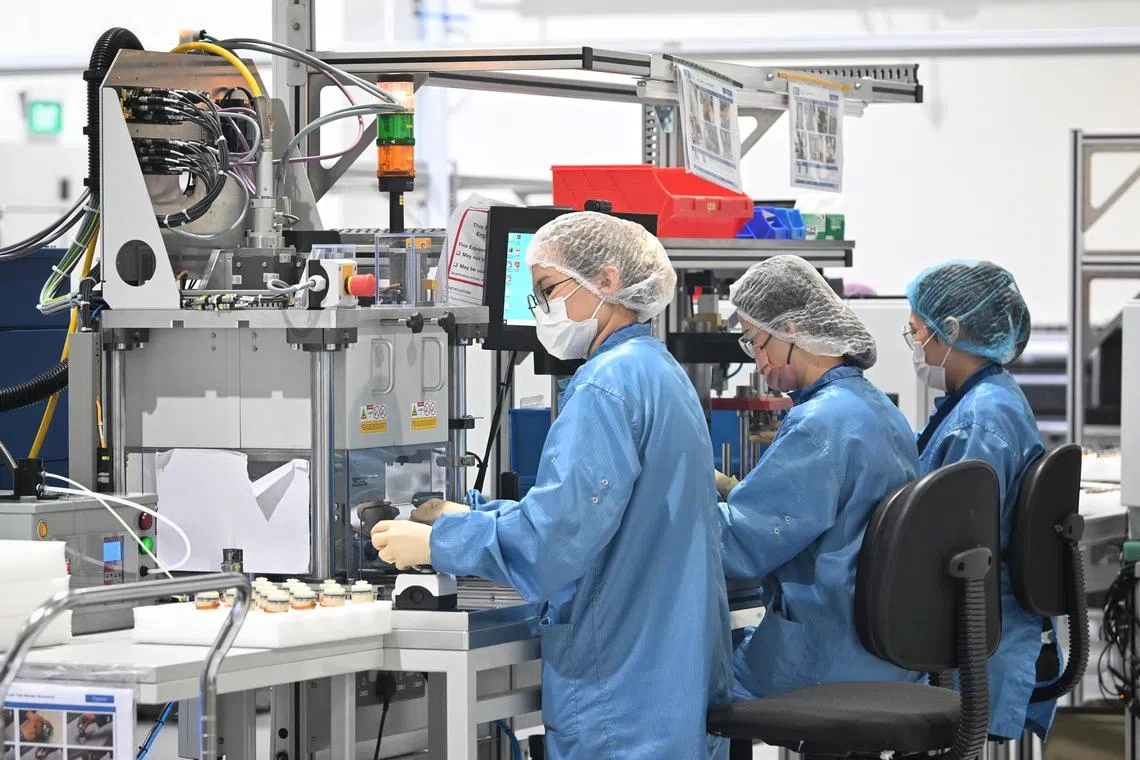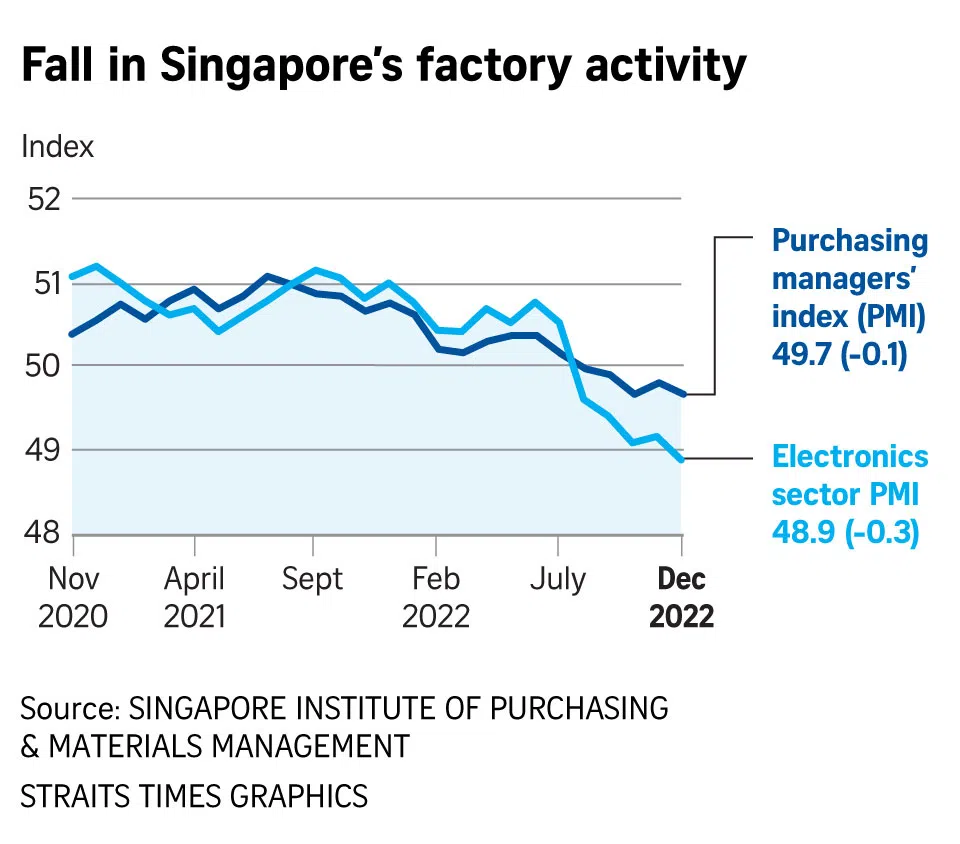S’pore factory activity slips further into contraction in December
Sign up now: Get ST's newsletters delivered to your inbox

The purchasing managers’ index came in at 49.7 in December, down 0.1 point from November.
ST PHOTO: CHONG JUN LIANG
Follow topic:
SINGAPORE - Factory activity in Singapore dipped in December from the previous month for a fourth straight month of contraction as global demand for manufactured goods continues to weaken.
The purchasing managers’ index (PMI) – a key indicator of trends in the sector – came in at 49.7 in December, down 0.1 point from November.
It was attributed to a faster contraction in the key indexes of new orders, new exports, factory output and inventory.
A reading over 50 indicates expansion; one below that points to contraction.
The global economy is experiencing a slowdown in the wake of rising inflation, higher interest rates and uncertainties from geopolitical developments.
The electronics sector PMI dipped 0.3 point from November to 48.9 – the fifth month of decline after two years of continuous expansion.
OCBC Bank chief economist Selena Ling said the combination of sharper contractions in new orders, new export orders, output inventory, finished goods, imports and employment gauges are foreboding signs of waning growth momentum still to come in the next few months.
Even the decline in input prices for both manufacturing and electronics is cold comfort when global demand conditions are on a soft footing, she added.
Said Ms Ling: “I would expect that the domestic manufacturing sector will... remain lacklustre in at least the first quarter of 2023 and pass the baton for supporting GDP (gross domestic product) growth and employment to the services sector, which should benefit from the still healthy local employment situation and China’s Covid-19 policy pivot, although a recent surge in infections may also warrant tapering initial market euphoria.”
UOB senior economist Alvin Liew said the further drop in December’s overall and electronics PMI readings was not a surprise, and noted that weaker external demand and the electronics downcycle remain in place.
“We expect further downside to the PMIs in the first three months of 2023 and the weakness to extend at least another quarter, or even two,” said Mr Liew.
“Upside growth factors could be attributed to the continued recovery in leisure and business air travel and inbound tourism, which will benefit many in-person services sectors. The impact of China’s reopening from Jan 8 is likely to be positive for these sectors, although it is difficult to quantify at this juncture,” he added.
“With the faltering manufacturing outlook and barring external events, such as escalating war in Europe and a deadlier variant of Covid-19, we keep our modest 2023 GDP growth forecast of 0.7 per cent.”

Ms Sophia Poh, vice-president of industry engagement and development at the Singapore Institute of Purchasing and Materials Management, which compiles the index, noted: “The latest PMI readings do not bode well for the manufacturing sector.
“Slowing electronics demand and escalating cost pressure are weighing on the overall manufacturing sector.
“Global uncertainties from geopolitical developments as well as the macroeconomic risks of high inflation and volatile energy prices continue unabated into the new year.”

